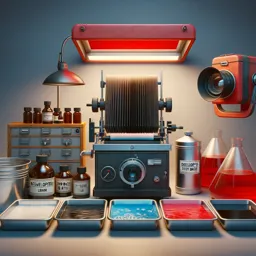Creating realistic product mockups is an essential skill for designers and marketers. Adobe Photoshop’s extensive toolset allows you to showcase products like packaging, apparel, and digital designs in a visually appealing and professional manner. In this article, we’ll guide you through the process of creating high-quality product mockups step-by-step, ensuring your designs stand out in any presentation or marketing material.
1. Start with a High-Quality Mockup Template
The foundation of a good product mockup is a high-quality template. You can create your own mockup or download pre-made templates from resources like GraphicRiver, Envato Elements, or FreePik. Ensure the template has editable layers and Smart Objects for easy customization.
- Tip: Look for mockups that include multiple views or angles of the product for a more comprehensive presentation.
2. Open the Mockup File and Locate Smart Objects
Open the mockup file in Photoshop. Most professional mockups include Smart Objects, which allow you to edit the design in a separate file without affecting the original mockup.
- How to Identify Smart Objects: Look for layers labeled with a small Smart Object icon (a page with a folded corner). Double-click on the Smart Object to open it in a new window.
- Tip: Smart Objects are typically used for applying your design to surfaces like product labels, screens, or apparel prints.
3. Insert Your Design into the Smart Object
Once you open the Smart Object, paste your design onto the canvas. Adjust the size and position as needed, making sure it fits the placeholder area accurately.
- Tip: Use the Transform Tool (Ctrl + T / Command + T) to resize and position your design. Hold down Shift to maintain proportions.
4. Save and Close the Smart Object
After placing your design in the Smart Object, save the changes (Ctrl + S / Command + S) and close the Smart Object window. Your design will automatically update on the main mockup file, conforming to the shape and perspective of the mockup.
- Tip: Check for alignment issues and make adjustments in the Smart Object if needed.
5. Customize Colors, Textures, and Backgrounds
Many mockup templates come with customizable background layers and textures. Use these layers to adjust colors, add shadows, or change textures for a more realistic effect.
- Tip: Use Color Fill Layers or Gradient Maps to modify the colors of the mockup’s base elements. Experiment with different textures to find the best fit for your product.
6. Add Shadows and Highlights for Realism
Shadows and highlights add depth and realism to your mockup. Create separate layers for shadows and highlights and use soft brushes with low opacity to paint them in. Consider the light source in your image to determine shadow directions.
- Tip: Use the Multiply Blending Mode for shadows and the Screen Blending Mode for highlights. Adjust the opacity for subtle, natural effects.
7. Use the Warp Tool for Perspective Adjustments
If your design doesn’t perfectly fit the shape of the product, use the Warp Tool to make adjustments. The Warp Tool allows you to bend and shape your design to match the curves and angles of the mockup.
- How to Use It: Select your design layer, go to Edit > Transform > Warp, and drag the handles to adjust the fit.
- Tip: Use the Distort Tool for more extreme perspective changes, such as fitting designs onto angled surfaces.
8. Apply Blending Modes for Seamless Integration
Blending Modes help blend your design into the mockup, making it look like it’s truly part of the product. Use Blending Modes like Overlay, Multiply, or Soft Light to integrate your design into the texture of the product.
- Tip: Adjust the Opacity and Fill settings to control the intensity of the blending effect.
9. Add Realistic Effects Using Filters
Filters like Gaussian Blur, Noise, and Motion Blur can add subtle imperfections that make your mockup look more realistic. For example, use Gaussian Blur to soften sharp edges or Add Noise for a textured look.
- Tip: Apply filters as Smart Filters (convert your layer to a Smart Object first) for non-destructive editing, allowing you to fine-tune the effect later.
10. Use Displacement Maps for Textured Surfaces
Displacement Maps allow you to conform your design to the texture of a surface, making it look more realistic on curved or uneven surfaces like fabric, paper, or textured packaging.
- How to Create a Displacement Map: Create a grayscale version of the product surface, save it as a separate PSD file, and apply it to your design using Filter > Distort > Displace.
- Tip: Use a low Displacement value to avoid distorting the design too much. Experiment with different settings to achieve a natural look.
11. Final Touches: Adjust Lighting and Color Balance
Once your mockup is complete, make final adjustments to the overall lighting and color balance to ensure all elements look cohesive. Use Adjustment Layers like Curves, Hue/Saturation, and Brightness/Contrast to fine-tune the appearance.
- Tip: Use a global Curves Adjustment Layer at the top of your layer stack to adjust the contrast and color balance for the entire mockup.
12. Export in High Resolution
When you’re satisfied with your mockup, export it in high resolution for print or web use. Go to File > Export As and choose the appropriate format, such as PNG for web or TIFF for print.
- Tip: Always export a copy in PSD format to retain layer information for future edits.
Conclusion
Creating professional product mockups in Photoshop is a valuable skill that allows designers to present their work in a polished and realistic way. By mastering Smart Objects, blending techniques, and perspective adjustments, you can produce mockups that look as good as the real thing. Experiment with different mockup styles and techniques to develop your unique approach, and watch your product presentations come to life.

























